How to Remove Creosote From Railroad Ties?
All you need to know about dealing with items treated with this chemical
Old railroad ties are often used by homeowners for their landscaping projects, however, your creativity might be dangerous if the ties you are buying contain creosote!
Creosote is a toxic substance and if you are planning on using old railroad ties treated with it, you should be aware of possible harm this substance may pose. Also, it’s good to learn more about this chemical so that you know what potential risks you may face when working with railroad ties treated with it.
Today, we will tell you more about removing creosote from wooden railroad ties. In particular, you will learn whether it is possible to get creosote out of wood and what methods you can use to do it.
Also, you will find out what exactly makes creosote harmful and dangerous, and how you can define that your body has been exposed to this chemical in excessive amounts.
Finally, we will explain how you can tell that your old wooden railroad ties have been treated with creosote.
How to Remove Creosote From Wooden Railroad Ties?
If you bought old railroad wooden ties for your garden decoration projects, you are now definitely concerned about removing creosote from them. The problem is that old and used railroad tie will be deeply penetrated by the toxic substance since they are mostly always treated with creosote!

However, there are still chances to remove it.
For example, you can opt for one of the following approaches, but pay attention that they may not fully work or may not work at all! It depends on how deeply your ties are soaked with the chemical, as well as on their age and condition. So, here is what you can try to do:
- You can try to sandblast the ties but the depth of the creosote penetration in the wood will be the determinant in this case. If the level of penetration is too deep, sandblasting will hardly work
- Another way of removing creosote from the railroad ties would be by sealing them. It is not actually removing the creosote but still, sealing might help to prevent the substance from getting into the soil
- The third option is to use a bandsaw to cut out all 6 faces of the railroad tie up to a couple of inches. As a variant, you can cut out as much as needed to remove the creosote-affected wood
You need to realize though that all of the options mentioned above don’t guarantee the successful removal of the creosote. It often happens that the chemical substance have gotten really deep into the wood, which makes it impossible to remove.
In addition, some of these methods (like sandblasting) can be dangerous for you! See, by sandblasting the ties, for instance, you expose yourself to the fine sawdust which is contaminated with the toxic creosote. And this substance is known to be a carcinogen.
This is why the best thing you can do is to always assume that any used railroad ties you are going to use were previously treated with creosote. In its turn, this means that you should wear protection if you have to cut a railroad tie and never burn those ties!

daniilphotos via VistaCreate
Table of Contents
Alternative Methods Of Creosote Removal From Railroad Ties
If none of the previous methods can be used for some reason, you may want to consider using alternative approaches. There is also no 100% guarantee that they will remove all creosote that’s in there in your wooden ties, but at least, these methods can help you reduce its amount.

theadaptive via VistaCreate
Use Solvents
To remove creosote from wooden railroad ties, try using solvents. For example, you might want to try mineral spirits or paint thinners for this kind of job. Of course, you need to make sure you wear a respirator and chemical-resistant gloves when working with solvents! Also, if you have such an opportunity, ventilate the room you are working in or work outdoors. This will allow you to prevent toxic fumes from accumulating.

housekeepingbay.com
There is another nuance you should be aware of in advance.
See, to treat all the railroad tie with the solvent and remove creosote, you will need a large amount of the product. This is why you should start on a small piece of wood first. Just apply the solvent to it and see if it can bring out the creosote or not.
This will help you to avoid wasting time and materials, but the results will depend on how deep the creosote has penetrated into the wood, as well as on the type of chosen solvent.
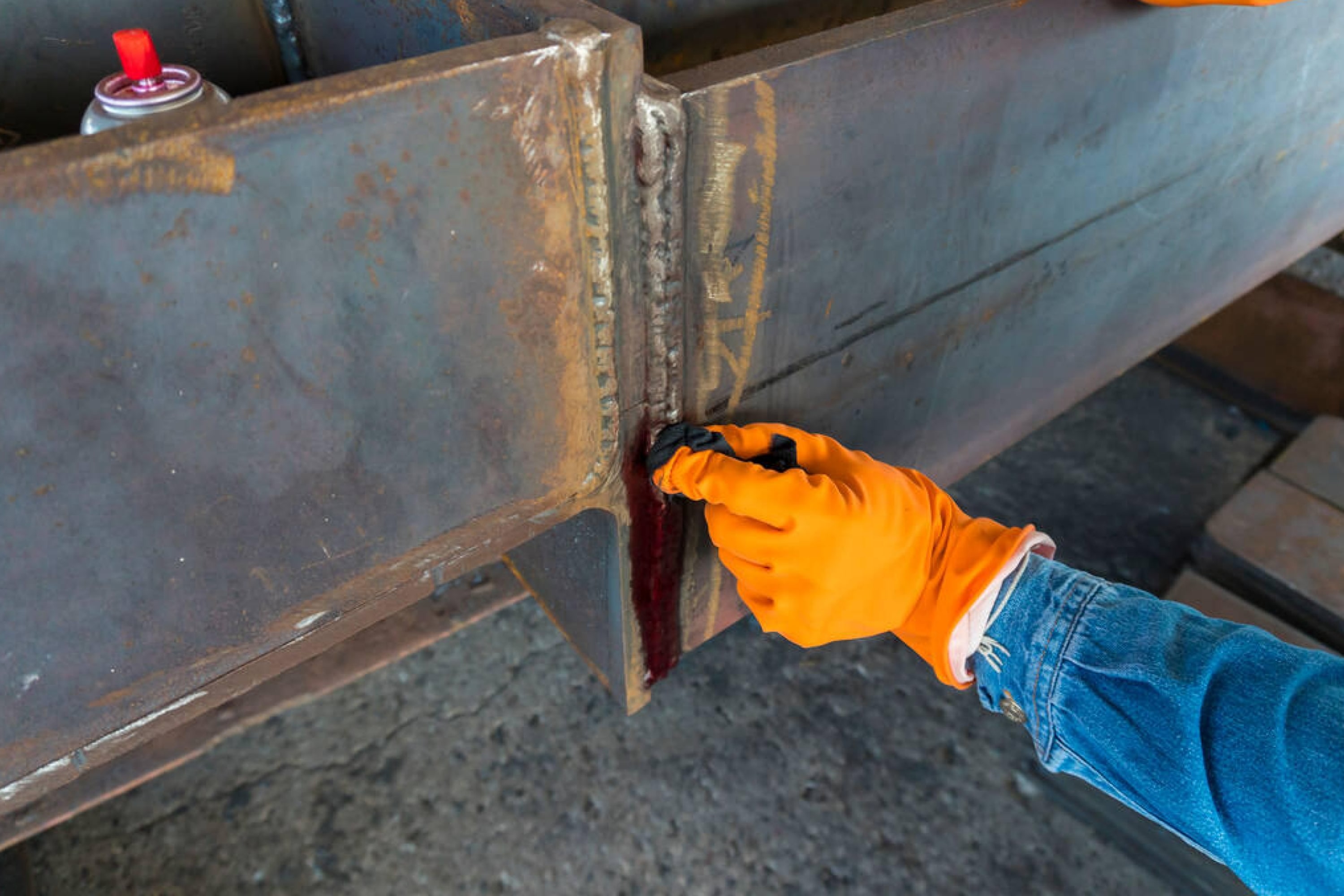
pong1986 via VistaCreate
Opt For Leaching to Get Rid Of Creosote In Wood
This is another method you might want to try as an alternative option. The general scheme is the following: since some creosote components are soluble in water, by getting the railroad tie in contact with the right amount of moisture, you can make some creosote leach out of it. But there is a couple of things to consider if you plan to use this method:
- You already know that creosote is a toxic chemical. This is why don’t put railroad ties to leach in the soil, otherwise, you will poison it!
- By leaching railroad ties in soil, you might also risk poisoning the groundwater, if it’s not that deep
- Always make sure you are not breaking any laws if you decide to follow this method!
- Very old railroad ties might not leach creosote at all. This is why remember to check on the tie now and then while leaching to see if you are getting any results at all
- A certain level of moisture is required for this method to work and be effective. So wet the soil if it is too dry and/or you are not getting any result
Finally, keep in mind that you should carefully pick a location for leaching your railroad ties. So after you establish that you can put your ties into the soil, make sure you find a proper and suitable spot for this. It might be a good idea to use a remote area of your property to do it. The place should be distant, making you sure that you won’t cause any harm to the soil, people, animals, or overall environment.
Well, now you have a better and clearer understanding of what removing creosote from wooden railroad ties requires.
As you are aware now, this process never gives you guarantee on any success, so you should always be ready that you will not strip all creosote out of your ties! However, since now you have several methods of doing this, you can at least try each to see how it will work.
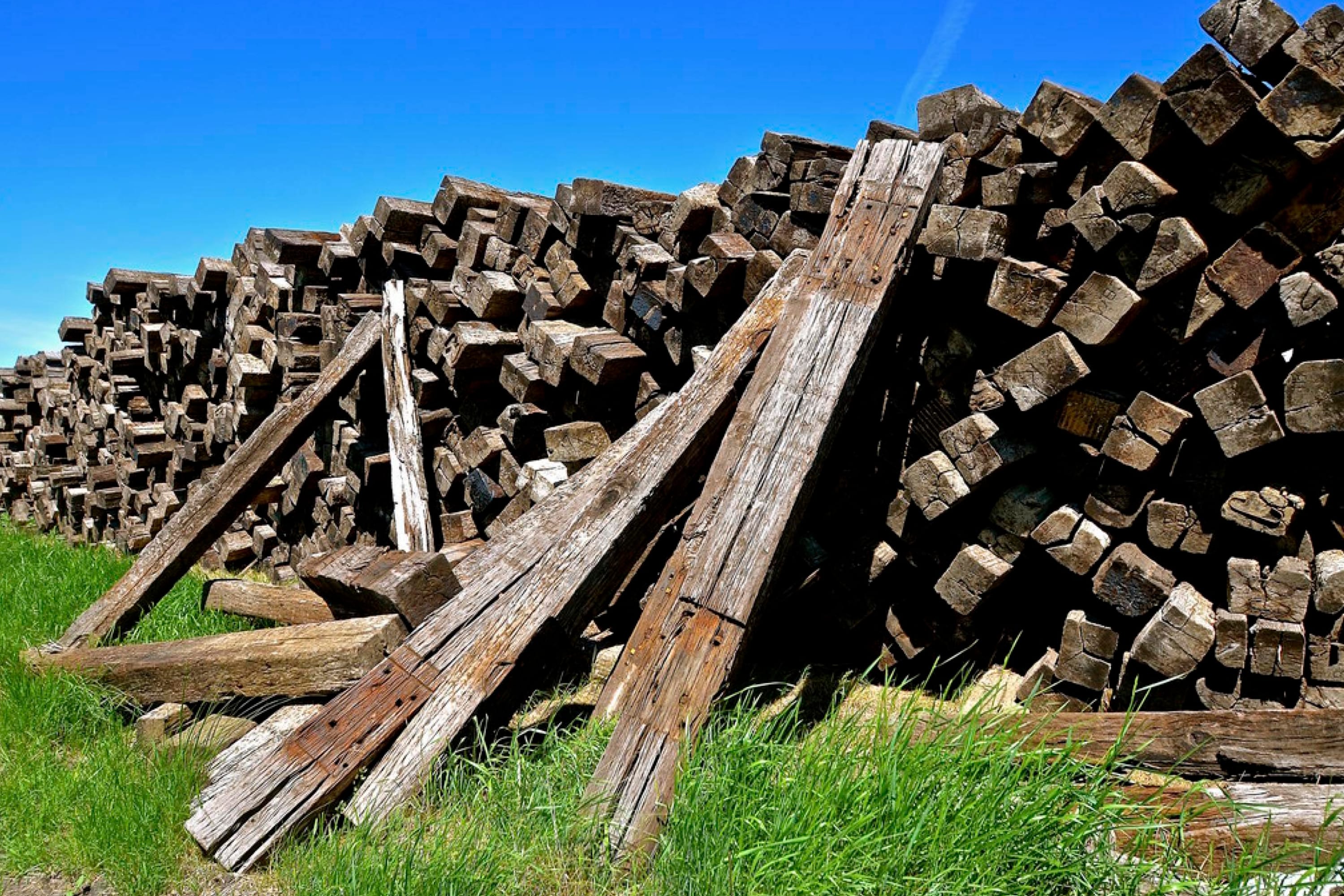
fiskness via VistaCreate
How to Define Whether Railroad Ties Have Creosote?
Before you start your railroad tie creosote removal odyssey, you need to know how to figure out whether creosote is in there at all. Luckily, it is quite easy to do. See, creosote is made out of the distillation of tar from wood/coal and this is why it has a dark color, often almost black.
So, the simplest way to tell if the railroad tie you are working with has been previously treated with creosote is by the color of it. If the wooden tie is blackish, looks like it is clogged, and has a nasty sticky substance on it that resembles oil, then it has been treated with creosote.
But there are a few things you need to know when dealing with creosote-treated wood. They can be quite confusing, so make sure you read carefully!
First, you should keep in mind that after a while, the chemical used for treating the wood ties will leach away into the soil naturally. This is why old railroad ties might not have any blackness at all!
However, if the tie is not black, that doesn’t mean that creosote is not present in it.
Also, wood tends to turn blackish with the flow of time even without creosote in it. Especially the old used railroad ties which were exposed to rain, snow, and other elements. But in any case, stick to a rule of thumb: chances are extremely low that a railroad tie that has been used previously by the railroad was not treated with creosote.
And just for you to know, a railroad tie that is not treated with creosote will look like a piece of regular wood. It will have a natural wood color, with pores open and veins visible. Also, it will not be clogged and/or covered with anything that looks or smells like oil or paint.
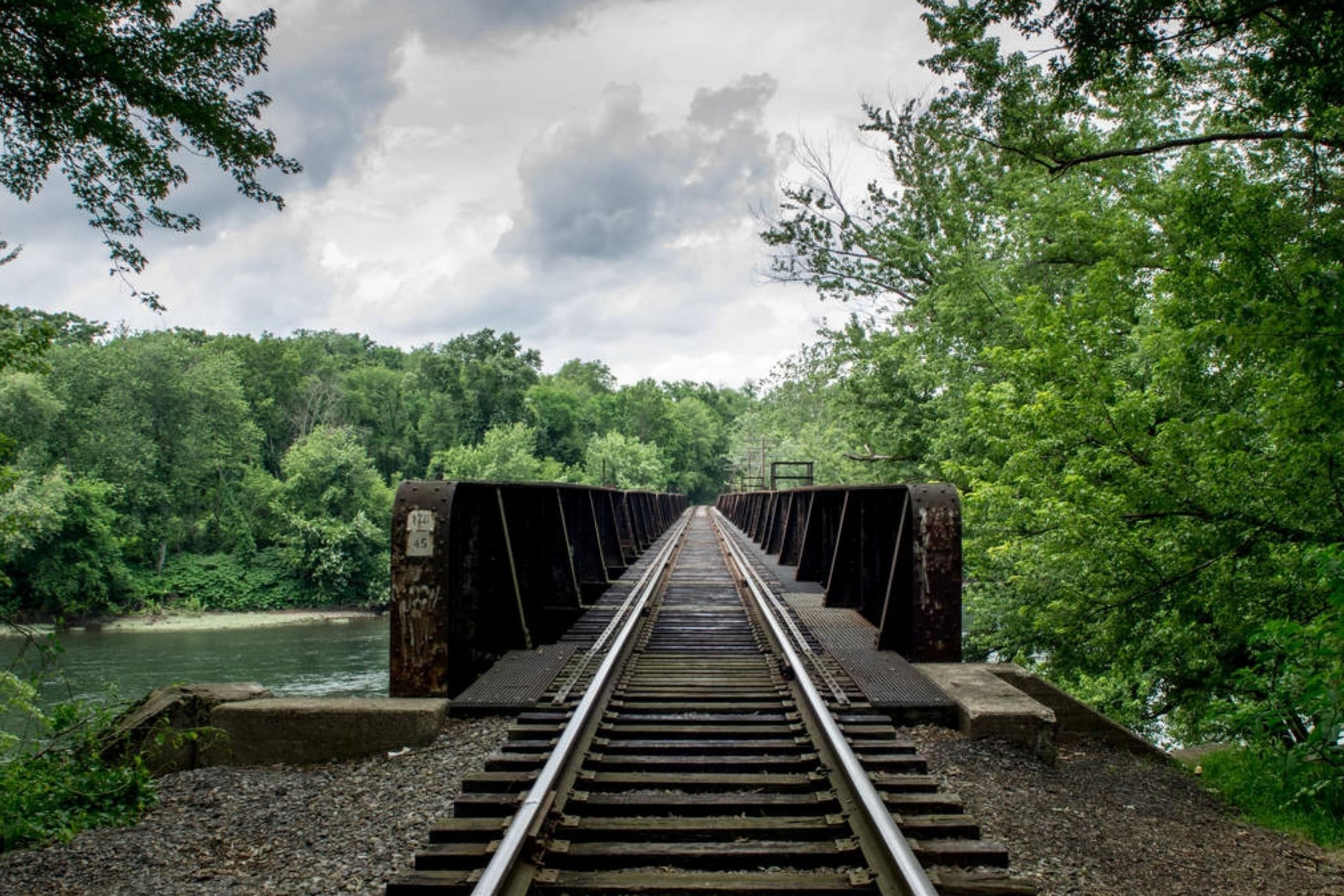
clintonweaverphotos via VistaCreate
What Makes Creosote Dangerous?
As you already know, creosote is made up of all sorts of really bad chemicals. This is why creosote substance is considered a carcinogen.
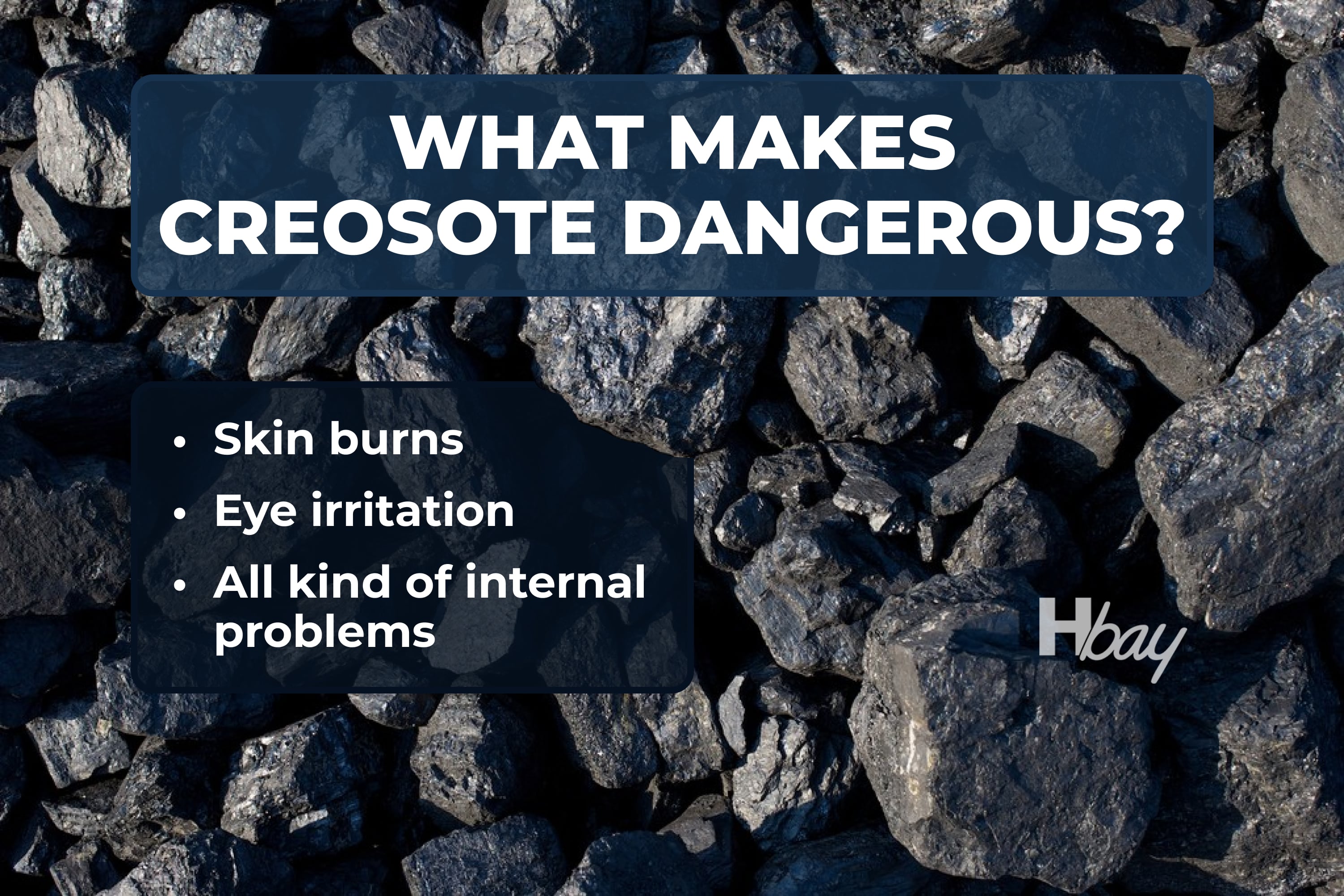
housekeepingbay.com
Exposure to creosote-treated wood without proper protection might cause different bad effects:
- skin burns
- eye irritation
- all kind of internal problems
That’s why you must be extremely careful when working with creosote-treated wood. You must always wear glasses, protective gloves, and a face mask. To be honest, a respirator would be even better.
Also, make sure to protect your skin from any contact with the chemical, even in the smallest amounts. In fact, when working with creosote-treated wood, consider wearing a coverall!

Once again, creosote is highly dangerous for human health! It can pose high health risks, such as the following:
- Eyes burns
- Skin rashes
- Convulsions
- Blistering/peeling of the skin
- Burning in the mouth/throat
- Problems with the internal organs
But if you follow all the precautionary measures, you will be able to protect yourself. So don’t neglect your health!

housekeepingbay.com
Like that, now you folks know way more about how to remove creosote from old wooden railroad ties.
Should you decide to incorporate this potentially dangerous element into your garden design, you now have a full packet of information regarding how to get this chemical out of the wood and how to protect yourself from any possible danger.
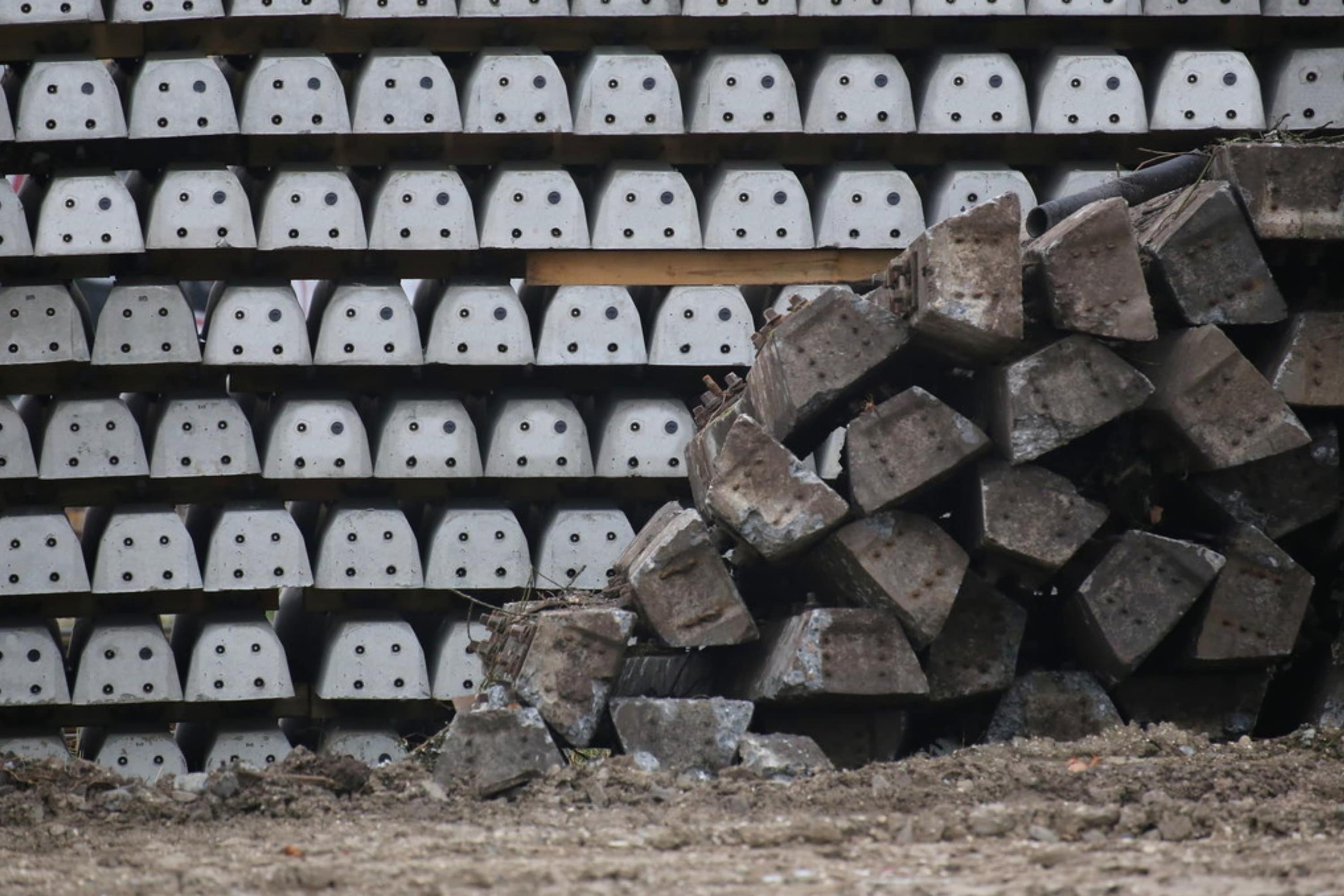
jojoo64 via VistaCreate
Ever wished paint sampling was as easy as sticking a sticker? Guess what? Now it is! Discover Samplize's unique Peel & Stick samples. Get started now and say goodbye to the old messy way!
Get paint samples




Frequently Asked Questions
⭐Is it possible to smell creosote?
On a hot summers day, a railroad tie treated with creosote will smell like oil if exposed to direct sunlight.
⭐Is creosote toxic?
Yes, it is. It can cause serious health issues including cancer and chronic health problems.
⭐What to do is you inhale creosote fumes?
If you inhale creosote fumes, seek medical attention immediately. When not treated in time, they can cause asthma and other breathing problems.







Hello! I know it’s not quite a proper question to fit this particular topic, but maybe you could help. Could you please tell me how long the smell of creosote from the chimney lasts?
Hello. Usually, creosote smells for two or three days after it has been used, emitting a strong “smoky” smell. We recommend you keep the fireplace doors closed (if you have them) before, during and after you use it. And also, remove all the ashes from the firebox after burning.
The only credible way to deal with creosote in a railroad tie is to somehow seal it off- yet you cover this only in a perfunctory manner. This is just a Suzy Homemaker kind of article
Hello, Jim! Thank you for your comment! We’ll add it to the comments section.
Does anyone know whether smelling creosote fumes can make you sick? I’m going to work with the wooden railroad ties that can potentially contain some creosote, so I’m kind of nervous.
If you breathe the creosote fumes while working with creosote-treated wood, it can cause asthma and other respiratory ailments. Also, you can experience stomach pain and a burning sensation in the mouth and throat. I’d say you should wear a fullcover to protect yourself,a nd don’t forget a good respirator!